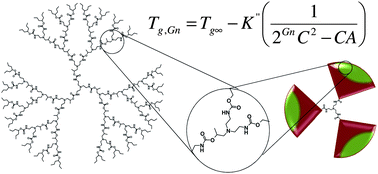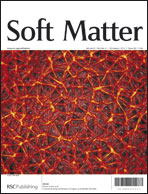Synthesis and thermal studies of aliphatic polyurethane dendrimers: a geometric approach to the Flory–Fox equation for dendrimer glass transition temperature†
Abstract
A new convergent synthesis for polyurethane dendrons to generation 4, and dendrimers to generation 3, is presented with control of surface functionality. The systematic synthesis of twenty-six new dendritic materials has led to a study of the factors affecting Tg using widely accepted approaches. The established understanding of dendritic polymerTg behaviour is that the Flory–Fox models, used for linear


 Please wait while we load your content...
Please wait while we load your content...